I'm very new to Jetty and Vaadin. I try to get a Jetty running hosting a minimal Vaadin Fusion example.
However, already on the first visit on my empty index.html I got a connection lost banner and a 404 because it tries to redirect to an /offline-stub.html that I don't have.
The Produced view:
In the network tap, you can see that Vaadin somehow initiates the redirect:
My index.html is very simple:
<!DOCTYPE html>
<html lang="en">
<head>
<meta charset="UTF-8" />
<meta name="viewport" content="width=device-width, initial-scale=1" />
<title>Vaadin Grocery App</title>
<style>
body {
margin: 0;
width: 100vw;
height: 100vh;
}
#outlet {
height: 100%;
}
</style>
<!-- index.ts is included here automatically (either by the dev server or during the build) -->
</head>
<body>
<h1>hello</h1>
</body>
</html>
an index.ts as well:
import { Router } from '@vaadin/router';
import { routes } from './routes';
import { appStore } from './stores/app-store';
export const router = new Router(document.querySelector('#outlet'));
router.setRoutes(routes);
window.addEventListener('vaadin-router-location-changed', (e) => {
appStore.setLocation((e as CustomEvent).detail.location);
const title = appStore.currentViewTitle;
if (title) {
document.title = title + ' | ' + appStore.applicationName;
} else {
document.title = appStore.applicationName;
}
});
I initiate the Jetty like this:
public static void main(String[] args) throws URISyntaxException, IOException {
Log.setLog(new StdErrLog());
System.out.println("Server starting...");
String extForm = webRoot + "/webapp";
System.out.println(extForm);
final ServletContextHandler context = new ServletContextHandler(ServletContextHandler.SESSIONS);
context.setContextPath("/");
final ResourceHandler resHandler = new ResourceHandler();
resHandler.setResourceBase(extForm);
final ContextHandler ctx = new ContextHandler("/");
ctx.setHandler(resHandler);
Server embeddedServer = new Server(8080);
embeddedServer.insertHandler(context); // Rest/Servlets
embeddedServer.insertHandler(resHandler); // HTML Resources
try {
embeddedServer.start();
embeddedServer.join();
} catch (Exception e) {
System.err.println("Server error:\n" + e);
}
System.out.println("Server stopped");
}
Webroot, extform -values are correct and the files are at those specified locations on disk:


